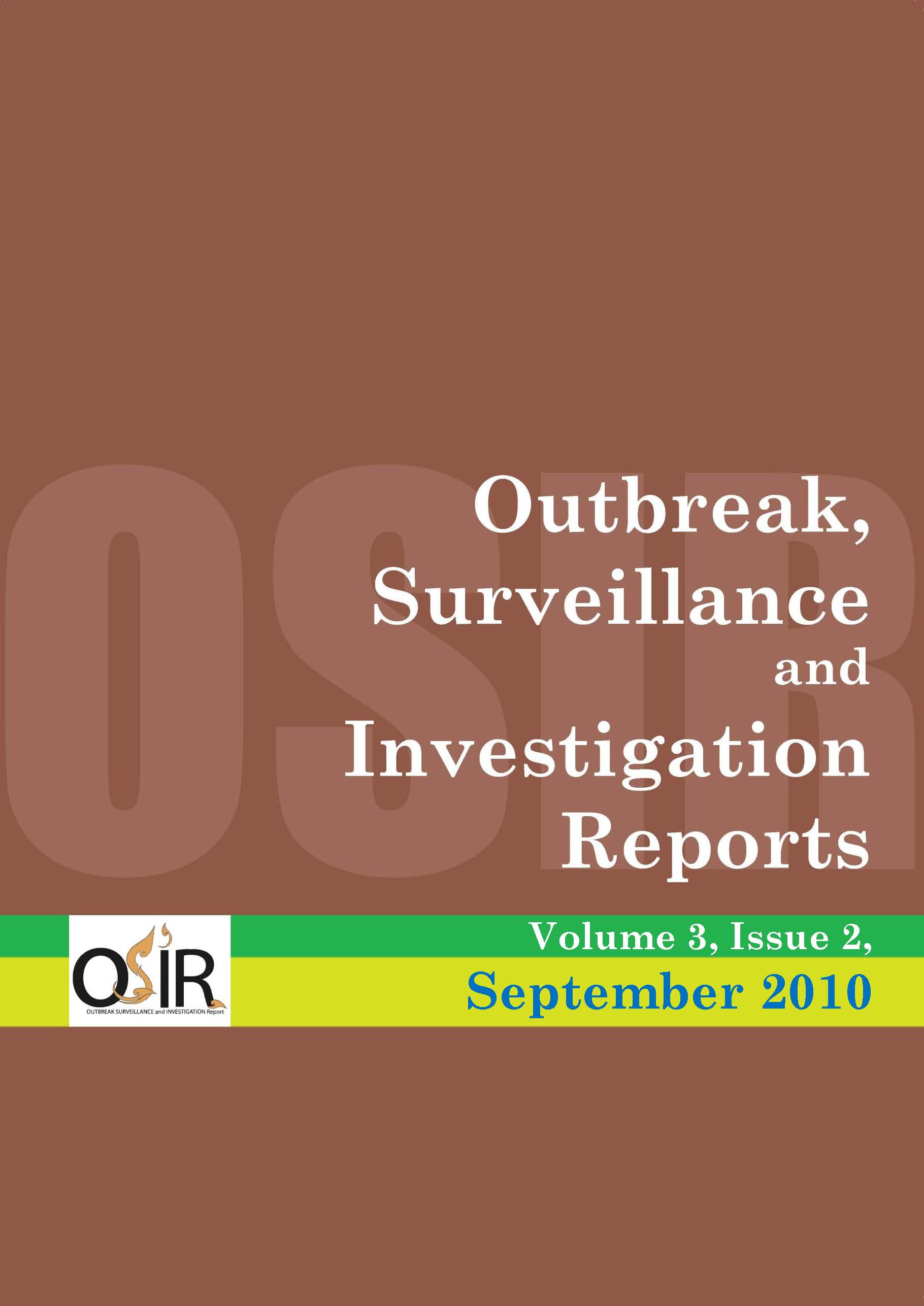Interventions and Respiratory Specimen Screening of Close Contacts to Control an Outbreak of Pandemic Influenza A (H1N1) Virus in a Tour Group, China, 2009
DOI:
https://doi.org/10.59096/osir.v3i2.263360Keywords:
pandemic H1N1, outbreak, tour group, interventionsAbstract
From 2-8 Jun 2009, a 2009 H1N1 outbreak occurred in a tour group of 30 people from five Chinese provinces and two foreign countries. We described the interventions taken in response to this tour group outbreak and reported the results of those efforts. Potential close contacts were identified and classified into five categories. Demographic and contact information were obtained to trace them back. Once contacted, close contacts were given seven-day medical observation, and sequential throat swabs were collected from all close contacts and tested using RT-PCR to determine infection and clarify diagnosis. 172 close contacts were identified. Among them, 163 (95%) were successfully traced back for medical observation at home [20 (12%)], in designated hotels [103 (63%)] and in hospital [40 (25%)] by 17 Jun 2009. Ten of 11 (91%) contacts under medical observation developed symptoms and were confirmed as secondary cases by RT-PCR testing; the other one tested negative. Tour groups that bring strangers together from many distant locations for a few days can result in accelerated transmission of influenza and likely other respiratory diseases. Public health policies for the control and prevention of respiratory diseases need to address potential transmission by such groups.
References
WHO. Pandemic (H1N1) 2009 - update 100. 2010 May 14 [cited 19 May 2010]. <http://www.who.int/csr/don/2010_05_14/en/index.html>
Zimmer S, Burke D. Historical perspective - emergence of influenza A (H1N1) viruses. N Engl J Med. 2009;361:279-85.
Jordan HT, Mosquera MC, Nair H, France AM, Swine Flu Investigation Team, EIS officers. Swine-origin influenza A (H1N1) virus infections in a school-New York City, April 2009. MMWR 2009;58:1-3.
Cutler J, Schleihauf E, Hatchette TF, Billard B, Gaynor WC, Davidson R, et al. Investigation of the first cases of human-tohuman infection with the new swine-origin influenza A (H1N1) virus in Canada. CMAJ. 2009;181:159-163. Epub 2009 Jul 20.
Bin C, Xingwang L, Yuelong S, Nan J, Shijun C, Xiayuan X, et al. National influenza A pandemic (H1N1) 2009 clinical investigation group. Clinical and epidemiologic characteristics of 3 early cases of influenza A pandemic (H1N1) 2009 virus, People's Republic of China. Emerg Infect Dis. 2009;15:1418-1422.
Han K, Zhu X, He F, Liu L, Zhang L, Ma H, et al. Lack of airborne transmission during outbreak of pandemic (H1N1) 2009 among tour group members, China, June 2009. Emerg Infect Dis. 2009 Oct;15(10):1578-81.
Ministry of Health of China. Diagnostic and treatment protocol of pandemic 2009 H1N1. 2009 Oct 13 [cited 22 Jan 2010]. <http://www.moh.gov.cn/publicfiles/business/htmlfiles/mohyzs/s3586/200910/43111.htm>
Centers for Disease Control and Prevention. Interim guidance for clinicians on identifying and caring for patients with swine-origin influenza A (H1N1) virus infection. 2009 [cited 6 Jul 2009]. <http://www.cdc.gov/h1n1flu/identifyingpatients.htm>
World Health Organization. WHO technical advice for case management of influenza A (H1N1) in air transport. 2009 May 13 [cited 6 Jul 2009]. <http://www.who.int/ihr/travel/A(H1N1)_air_transport_guidance.pdf>
Centers for Disease Control and Prevention. Interim guidance for infection control for care of patients with confirmed or suspected novel influenza A (H1N1) virus infection in a healthcare setting. 2009 [cited 6 Jul 2009]. <http://www.cdc.gov/h1n1flu/guidelines_infection_control.htm>
Guinard A, Grout L, Durand C, Schwoebel V. Outbreak of influenza A (H1N1)v without travel history in a school in the Toulouse District, France, June 2009. Euro Surveill 2009;14(27).
Carrat F, Vergu E, Ferguson NM, Lemaitre M, Cauchemez S, Leach S, et al. Timelines of infection and disease in human influenza: a review of volunteer challenge studies. Am J Epidemiol 2008;167:775-85.
Downloads
Published
How to Cite
Issue
Section
License
Copyright (c) 2023 Outbreak, Surveillance, Investigation & Response (OSIR) Journal

This work is licensed under a Creative Commons Attribution-NonCommercial-NoDerivatives 4.0 International License.








